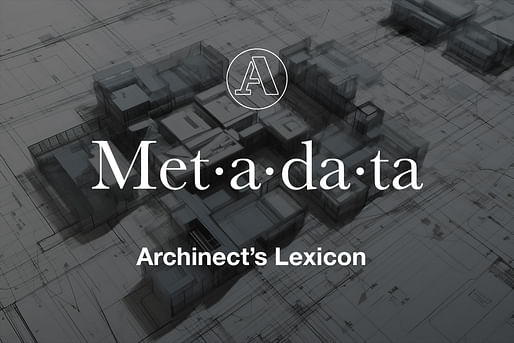anchor
Archinect's Lexicon: "Metadata"

Image credit: Archinect / Midjourney
Archinect's Lexicon focuses on newly invented or adopted vocabulary within the architectural community. For this installment, we're featuring a term relevant to the both recent wave of generative AI tools released for public use in the AEC sector and beyond, and the software tools already underpinning the profession.
"Metadata," often described as "data about data," refers to information that provides details about other data. In essence, metadata offers context, description, or additional details about the main data it pertains to. Examples of metadata include the title of a document, the date a photo was taken, or the author of a piece of content.
In the context of building design, metadata plays several crucial roles:
- Building Information Modeling (BIM): BIM is a digital representation of the physical and functional characteristics of a facility. Within BIM, metadata can include information about the materials used, the manufacturer of a component, maintenance schedules, and much more. This allows for better collaboration, efficient design changes, and streamlined facility management.
- Documentation & Record Keeping: Every building design will have associated metadata like who created it, when it was last modified, who approved it, and so on. This helps in maintaining an audit trail and ensures traceability.
- Interoperability: In building design, tools and software from different vendors are often used. Metadata can assist in ensuring that data is interoperable between these different tools, maintaining information consistency.
- Search & Retrieval: Metadata aids in quickly searching for and retrieving specific building design files or data sets. For instance, if an architect wanted to find all designs made using a specific material or by a particular designer, metadata would simplify this search.
- Maintenance & Lifecycle Management: Metadata can provide information on the expected lifespan of building components, warranty details, or recommended maintenance schedules, ensuring that building managers can plan and act accordingly.
This article is part of the Archinect In-Depth: Artificial Intelligence series.
Similar articles on Archinect that may interest you...

No Comments
Block this user
Are you sure you want to block this user and hide all related comments throughout the site?
Archinect
This is your first comment on Archinect. Your comment will be visible once approved.